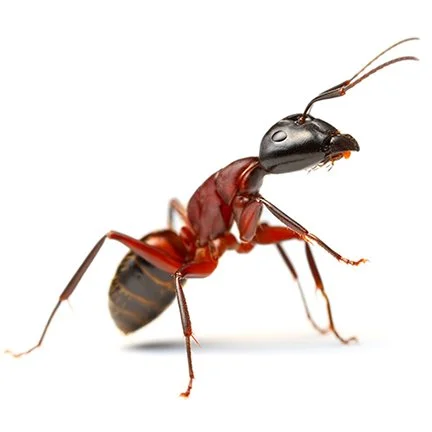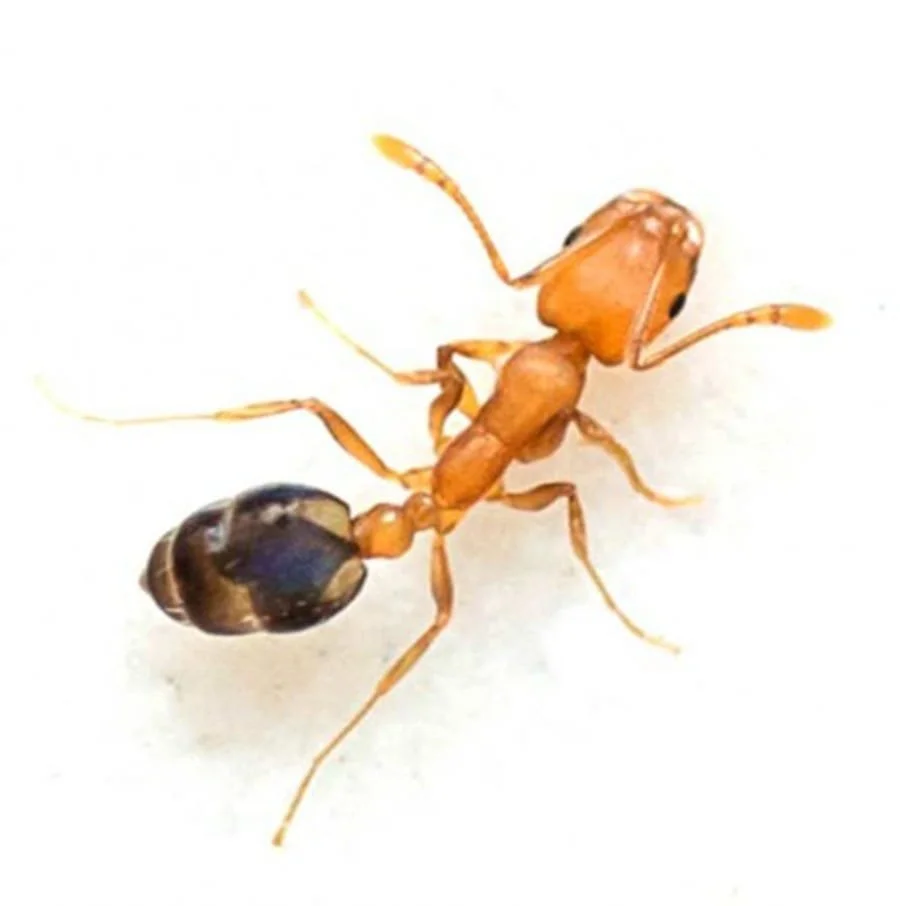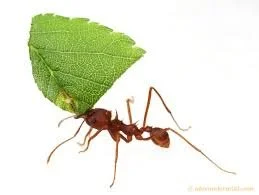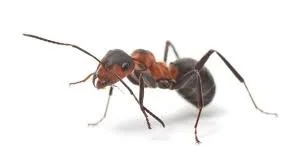
Ants are among the most common pests in East Texas — tiny, organized, and seemingly everywhere. From backyard mounds to kitchen countertops, ants can quickly turn from a minor nuisance into a major problem. Understanding what ants are, how they live, and which types are most common in our area is the first step toward effective control.
Ant Facts & Information
What Are Ants?
Ants are social insects belonging to the family Formicidae, part of the same order as bees and wasps (Hymenoptera). They live in colonies that can range from a few dozen to hundreds of thousands of individuals, depending on the species.
Globally, there are more than 12,000 known species of ants, and over 200 species can be found in Texas alone. Each species plays a role in its ecosystem — aerating soil, decomposing organic matter, and sometimes even protecting plants. However, when ants decide your home or yard is a good place to live, they quickly go from fascinating to frustrating.
General Characteristics of Ants:
Three-part body: head, thorax, and abdomen
Antennae: bent or “elbowed” appearance
Narrow waist: gives them flexibility and distinction from termites
Social structure: typically includes workers, queens, and sometimes winged swarmer ants including males (known as drones) and virgin females (known as princesses). After mating, the virgin females shed their wings and become queens, starting new colonies.
Communication: ants rely on pheromones (chemical trails) to guide other ants to food and warn of danger
Their incredible teamwork and adaptability are why ants are so successful — and so hard to eliminate without professional help.
-

Carpenter Ant
Large ants: roughly ¼ to ½ inch (6–13 mm) in many cases. Colors may be all black, brown, or a mix of red and black. They don’t sting, but can bite.
Because they tunnel through wood (though not eating it as termites do), over time they can weaken structural wood or form galleries that look like “termite damage” to an untrained eye.
-

Red Imported Fire Ant
Workers ~ 1.5–4 mm, reddish brown with slightly darker abdomen. Build conspicuous mounds, often without visible entrance holes.
Very aggressive when mound is disturbed; sting causes burning, raised bumps.
-

Acrobat Ant
Medium sized (smaller than carpenter ants), often brown to dark. When disturbed, they characteristically lift their abdomen (“gaster”) up over their bodies (like a rearing posture).
Prefer moist wood, tree cavities, rotting logs. They may also nest in wall voids or insulation near moisture sources.
-

Odorous House Ant
Small, ~1/8 inch (3 mm) or so. Dark brown to black. Emits a noticeable odor (often described as “rotten coconut” or a strong, unpleasant smell) when crushed.
These ants readily come indoors—kitchens, bathrooms, inside walls, under floors, behind baseboards. They are nuisance ants, usually not dangerous, but their presence indoors signals an active colony that may proliferate.
-

Pharaoh Ant
Tiny, ~1/16 inch (1.5–2 mm). Light yellow to tan with darker abdomen. Two nodes between thorax and abdomen. Nests in small voids; colonies split easily when disturbed.
Don’t sting or bite, but can spread bacteria such as Salmonella and Staphylococcus. Difficult to eliminate with DIY sprays.
-

Argentine Ant
1/16–1/8 inch (2.2–2.8 mm). Light to dark brown. Form massive colonies with multiple queens. Follow long foraging trails. Do not sting.
Very persistent; colonies can merge into “supercolonies,” making control difficult.
-

Leaf-Cutter Ant
Workers up to ½ inch (12–13 mm). Reddish-brown. Harvest leaves to grow fungus in underground nests. Do not eat leaves directly.
Can strip trees and plants of foliage. Outdoor pest more than household invader.
-

Harvester Ant
Workers ¼–½ inch. Red to dark brown. Build circular mounds with cleared area around entrance. Known for painful sting.
Beneficial seed collectors, but stings are painful; can damage lawns.
Where Ants Are Commonly Found and How They Behave
Ants are highly adaptable and can nest in almost any environment that provides food, water, and shelter.
Outdoors:
Lawns and gardens (fire ants and leaf-cutter ants are especially visible)
Under mulch, rocks, or pavement cracks
Along fence lines, tree roots, and near foundations
Around moisture-rich areas, such as irrigation systems and compost piles
Indoors:
Behind baseboards, walls, and electrical outlets
Under sinks or behind appliances where moisture accumulates
Around pet food bowls or crumbs on floors and counters
In attics and crawlspaces, especially if insulation is damp
Ants typically enter homes through tiny cracks or gaps around doors, windows, or utility lines. Once they find a reliable food source, they leave chemical trails that guide others to it — which is why a few scout ants can quickly turn into hundreds.
Most species are omnivorous, feeding on sweets, proteins, and fats. In East Texas, warmth and humidity can keep ant activity high year-round, though infestations often spike after heavy rain or drought when colonies seek higher, drier ground.
The Dangers of an Ant Infestation
While some ants are merely annoying, others pose serious risks to your home, health, and comfort.
1. Structural Damage
Carpenter ants tunnel through wood, potentially compromising framing, flooring, and trim over time. Their activity often goes unnoticed until damage is extensive.
2. Painful Stings and Bites
Fire ants are notorious for their aggressive behavior and venomous stings, which cause burning, itching, and in severe cases, allergic reactions requiring medical attention.
3. Food Contamination
Pharaoh and odorous house ants can contaminate food surfaces and stored goods. Some species have been known to carry bacteria such as Salmonella and Staphylococcus.
4. Electrical Damage
Fire ants occasionally nest in electrical boxes, air conditioning units, or wiring, leading to short circuits and equipment failure.
5. Rapid Reproduction and Spreading
Many ant colonies split into multiple new nests when disturbed — meaning do-it-yourself treatments often make infestations worse instead of better.
Protect Your Home — Schedule a Free Inspection
Ants are small but mighty, and once they establish a colony, they can be extremely difficult to remove without professional help.
If you’re noticing mounds in your yard, trails in your kitchen, or unexplained wood damage, don’t wait for the problem to grow. Contact Total Home Pest Solutions today to schedule your free pest inspection. Our expert team will identify the species, locate their nests, and create a customized treatment plan to protect your East Texas home — inside and out.
FAQs
1. Why do I suddenly have ants in my house?
Ants enter homes looking for food, water, or shelter — especially during temperature changes, droughts, or after heavy rains. Even the smallest crumbs or moisture near sinks, pet bowls, or leaky pipes can attract them. Once a few scout ants find a source, they leave a chemical trail that leads the rest of the colony right inside.
2. What’s the difference between fire ants and regular ants?
Fire ants are more aggressive and can sting multiple times, leaving painful welts. They build dome-shaped mounds outdoors and react quickly if disturbed. Most other household ants are nuisance pests — they may invade food or damage wood but don’t sting like fire ants.
3. Are ants dangerous to my home or family?
Yes, certain species can pose risks. Fire ants sting and can cause allergic reactions. Carpenter ants tunnel through wood and may weaken structural materials. Other ants, like pharaoh ants, can contaminate food and surfaces with bacteria. Even nuisance ants can become a serious problem if colonies grow unchecked.
4. Can I get rid of ants on my own?
DIY sprays and baits can help temporarily, but they rarely eliminate the entire colony — especially if the queen is hidden deep inside walls or underground. Some ant species, like pharaoh ants, can even split into multiple new colonies if disturbed. Professional treatment ensures the problem is identified correctly and solved at its source.
5. How can I prevent ants from coming back?
Keep food sealed, wipe up spills right away, fix leaky plumbing, and seal cracks or gaps around your foundation and windows. Regular pest maintenance and inspections can also prevent future infestations before they start.
6. When should I call a professional?
If you’re seeing constant trails of ants, large outdoor mounds, or damage to wood, it’s time to call a pest control expert. Early intervention saves time, money, and stress — and ensures colonies are fully removed rather than scattered.
